| Botanical Name |
|
| Family |
Aizoaceae - The fig-marigold family or ice plant family |
| Pronunciation |
|
| Common Name(s) |
IsiXhosa: ucwethekazi; ubushwa; umfanothenkqi
|
| Plant Group |
- Ground Cover A plant with a low-growing, spreading habit, grown specifically to cover the ground.
|
| Plant Size |
- Very Small
| Tree | 3m to 4m |
| Shrub | 25cm to 50cm |
| Perennial/ground cover | Up to 10cm |
| Bulb | 10cm to 20cm |
| Succulent | Up to 5cm |
|
| Position |
- Sun The area is in full sun for all or most of the day, all year round.
|
| General Information |
- Drought Tolerance: High The plant is well adapted to arid conditions; it can survive long periods of drought and high temperatures without extra water.
- Evergreen Plants that have leaves all year round.
- Frost: Hardy The plant can withstand freezing temperatures or frost without artificial protection.
- Salt spray tolerant A plant with specific adaptations enabling it to grow in a saline environment.
- Sand tolerant Plants adapted to survive in nutrient poor, very sandy soils.
- Water Wise Plant species originating from low rainfall regions that require less water to survive and thrive than other plant species.
- Wind Tolerant Plants able to withstand the effect of strong winds.
|
| Specific Information |
Aizoon glinoides is a ground hugging plant with branches radiating from a central tap root. It will also grow well if it receives a little shade during the day, but too much shade will negatively affect flowering. Very successful in sun, wind and sandy, stony or poor soil.
|
| Ad Break |
|
| Flowers |
| Description |
A profusion of small star-shaped flowers that open in full sunlight.
|
| Season |
- Spring to Autumn Plants will seldom bloom for the entire season as given in the list, but should flower during a period within these parameters.
|
| Colour |
|
| Growth Rate |
- Fast Specifying growth rate can be very misleading as there is considerable variation of growth rate depending on type and species of plant, available water, supplementary feeding, mulching and general care, as well as the plants suitability and adaptability to the garden environment.
|
| Plant Uses |
- Edging A low growing plant that provides softness or definition to the edges of a bed or walkway.
- Ground Cover Low-lying plants that spread fast, require minimal maintenance, and cover large expanses or bare areas between bulbs or shrubs. They provide protection from erosion and drought and improve the visual appearance of the garden.
- Pioneer for new gardens A very fast growing plant, able to withstand hardship, that can be used to populate land that has recently been cleared of natural vegetation. These plants pave the way for slower-growing species by adding nutrients to the soil and creating leaf litter.
- Retaining Walls Shallow rooted plants for cascading over dry stone walls or planting in hollow spots in retaining blocks.
- Rock Garden An area constructed of larger rocks, arranged naturally, to emphasise the use of stones as a main element. Generally plants used do not need a lot of care.
- Stabilize Banks Plant is used to prevent soil erosion because their roots will form a mat that stabilizes the soil and keeps it from washing away in heavy rains.
- Suitable for coastal gardens Plants adapted to dry, sandy soil, forceful wind, limited rainfall and intense sunlight.
- Suitable for seaside gardens Plants that will survive the hostile environment of harsh salty winds, dry sandy soil, irregular rainfall and heat found in seaside gardens.
- Wild Garden An indigenous garden planted for the benefit of wildlife and birds. Provides food, water, a variety of mini-biomes and no poisonous chemicals are used.
|
| Distribution and Habitat |
hot, dry areas in South Africa and Namibia. Grows on beach sand along the southern and eastern Cape coasts.
|
| Planting Suggestions |
After planting, keep moist until the plant has settled in, then reduce water to an occasional sprinkling. Use this flat spreading groundcover for a sunny spot where little else will grow. Keep under control as it could become invasive in ideal conditions.
|
| Medicinal Uses |
|
| Ad Break |
|


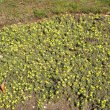
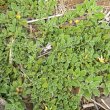
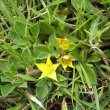
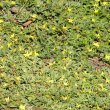
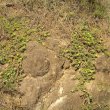
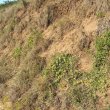


Discuss this plant
Share knowledge, ask a question or give an experience.